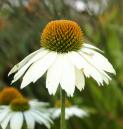The majority of physicians will prepare but few remedies themselves, yet it is just as essential that they know how they should be prepared, as if they made them all. With an intelligent understanding of the simpler processes of pharmacy, he will have a much better knowledge of the physical properties of medicines, and be enabled to judge somewhat of their purity and efficiency when purchasing.
The general drug trade has been a miserable fraud upon the profession. Whether selling crude or manufactured articles, the chances were ten to one that they were adulterated, and not what they were represented, (Morphia, Quinia, and some of the common chemicals, have been exceptions.)
So far has this sophistication been carried that all certainty in medicine, even in gross drugging for indirect effect, has been lost. Solid or fluid extracts are found of all degrees of strength, from the highest named in the pharmacopoeia to nothing. In many cases they are prepared from old and worthless crude material, that has partly or wholly lost its medicinal properties, yet it is sold in the same packages and at the same prices, as if good.
There is but one safe plan for the physician in procuring remedies, and that is by personal experiment to satisfy himself that a good remedy can he readily prepared, and learn to know it when he sees it. Deal with houses that claim to prepare remedies from recent crude material, of full strength, without heat, and return every package that does not come up to the full standard of strength and excellence.
It is well to adopt a simple nomenclature for fluid medicines. Let them be called tinctures, as they are prepared with alcohol, and specify the strength ounce for ounce, of crude material to fluid preparation.
I insist that all vegetable remedies should be prepared from the recent crude material obtained at its proper season. In some cases the remedy does not materially deteriorate within the year, and may be kept in stock until the next season for gathering. But in all cases it is better if prepared at once after gathering, and in many the preparation should be from the fresh article before any dessication. The reasons are obvious—the medicinal properties are found in the juices of the plant, or stored in its cells, principally of the bark. In both cases drying removes the medicinal principle, to a greater or less extent. The medicinal principles of plants are to a considerable extent complex and unstable organic bodies, and time, with its constant processes of change and decay, changes, deteriorates, and finally destroys them.
Strength of Fluid Remedies.
—As before remarked, a remedy is desirable in proportion as it is easily carried and dispensed, (leaving out of the question its medicinal action), hence concentration becomes an important element of pharmacy. A skilled manufacturer who has the proper appliances, has no difficulty in removing all the medicinal properties from vegetable products, so that one Troy ounce of crude material will be contained in one fluid-ounce of the tincture.
This may be accomplished by the simple process of percolation, in most cases. In some pharmacies this is supplemented by powerful pressure; in other cases, the hydraulic press being employed with advantage. In other establishments, the new process of percolation under atmospheric pressure, has been adopted with great advantage. Either of these methods if carefully and honestly conducted will give reliable and uniform remedies. If we can make up our minds that it is quality, rather than quantity, that we should look after, slight variations of strength will make but little difference. I do not wish to be understood, however, as admitting that there can be any great variation of medicinal strength, if recent crude material is used, and the product represents ounce for ounce, and the pharmaceutical processes have been skillfully conducted.
Physical Properties of Fluid Remedies.
—The fluid preparations should possess the exact physical properties (intensified), as regards odor and taste, of the fresh crude material. It will have the color of the chlorophyll of the article, but should be clear and transparent, and give no sediment, or muddiness when shaken. These may seem like minor matters, yet we will find it profitable to give them attention. Skilled pharmacy gives fine looking remedies, and they are likely to be good. Unskilled pharmacy gives dirty-looking preparations, and they are likely to be inferior.
We may judge to a considerable extent of the goodness of chemicals in the same way. If we find our Sulphate of Quinia and Morphia presenting the clear white silky or feathered crystals, we are satisfied that we have good remedies. But if it is dull, discolored, crystals faint, broken, or amorphous, we want none of it. So in the purchase of the Bromides, Iodides, Salts of Potash and Soda, Iron, etc., we expect to find the highest physical qualities, associated with purity and efficiency. If a salt is discolored, or in any wise deficient in its appearance, we want none of it.
Specific Medication and Specific Medicines, 1870, was written by John M. Scudder, M.D.

